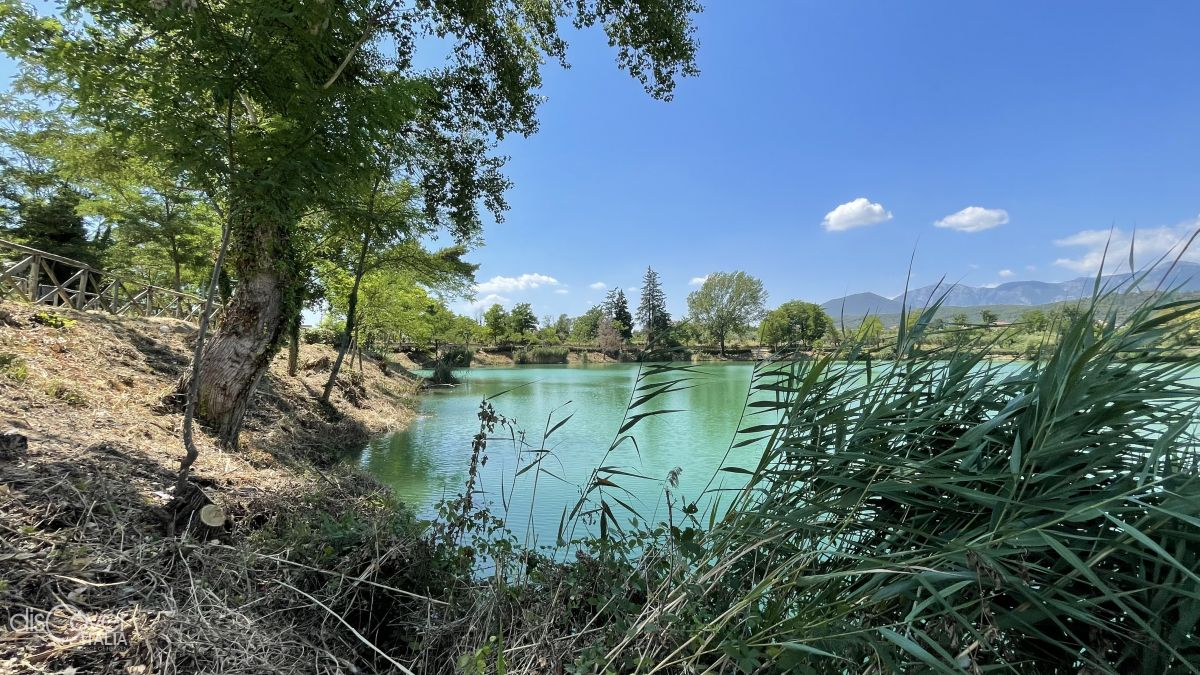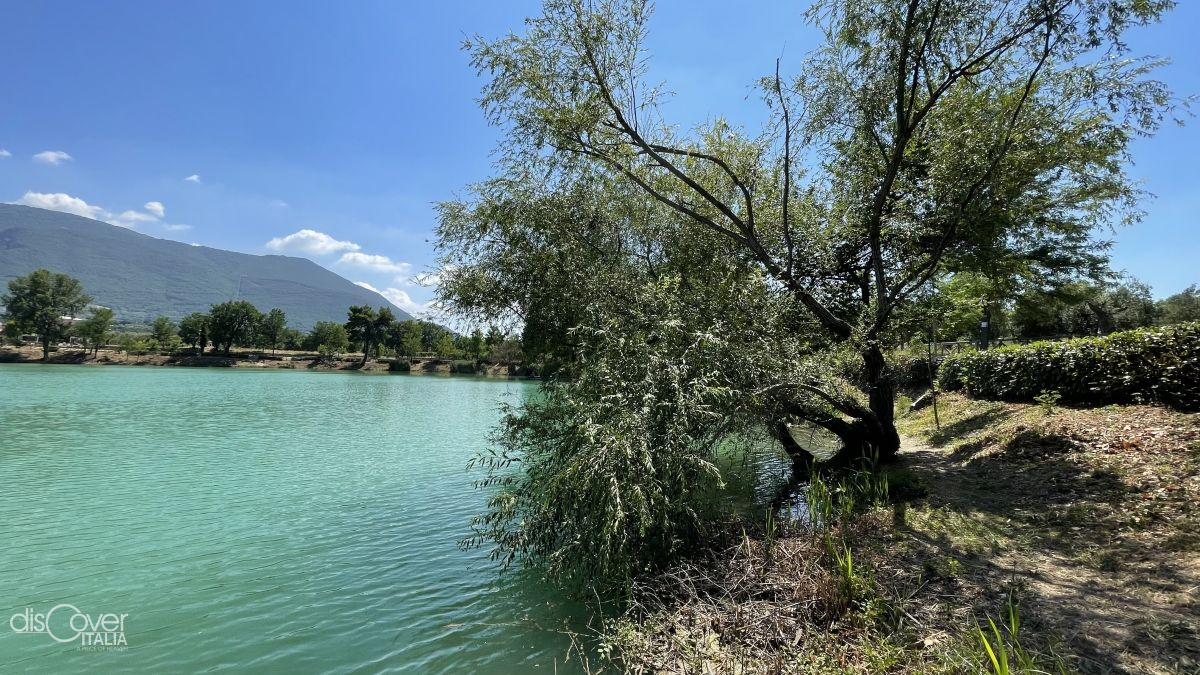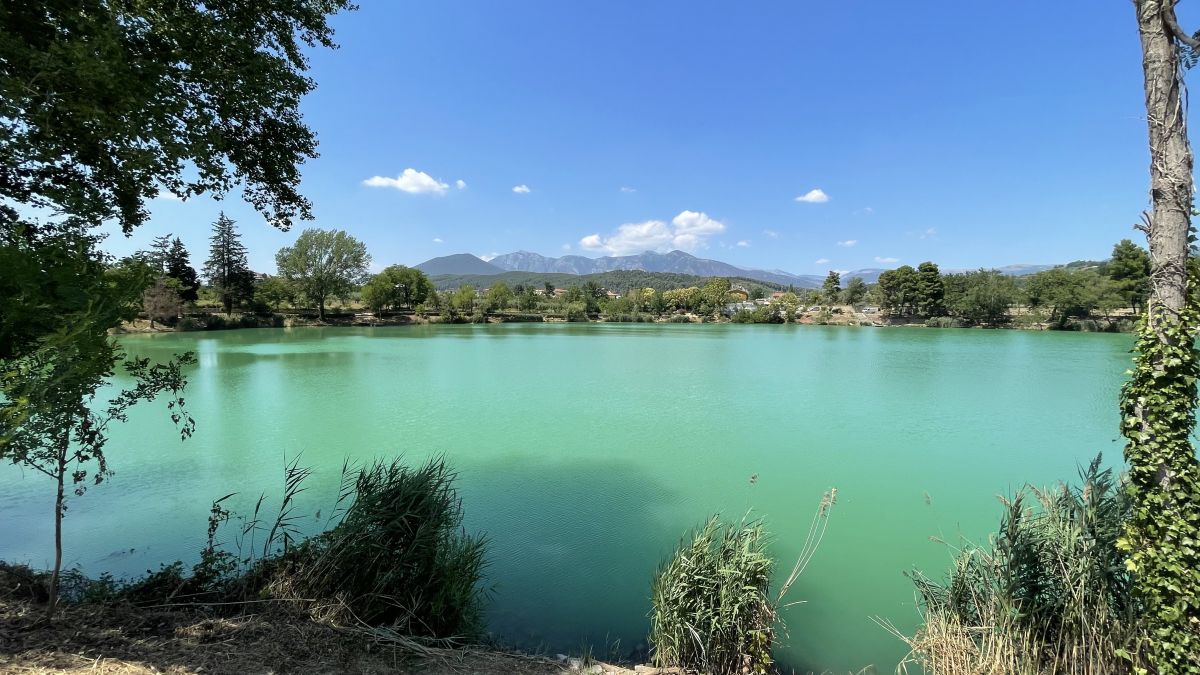A territory rich in water, characterized by karst phenomena which, usually in a very slow pace, in some phases have undergone rapid evolutions, capable of significantly changing the landscape.
And that is what happened September 9th 1349, when the earth shakes in the Valley Telesina. Which after the event became completely different. The ancient Telesia of Samnite origin was largely erased, all around it was possible to see subsidence, emissions of gas and sulphurous waters, small ponds. And also a lake, formed not far from the now disappeared city and the course of the Calore, in what was known as the plain of Sant'Aniello. There the land was drastically lowered by over thirty meters and the reservoir was soon filled with water, creating a lake basin that is clearly visible from all the peaks of the Matese and Taburno-Camposauro that surround the valley.

Over time, the circular shape led to the belief that the lake could be volcanic in nature. But the presence of travertine spotted in various stretches along the shore unequivocally signals its karst origin, common to all the other geological evidences of the area. It is powered by the water coming from massif Matese, just like Rio Grassano and the nearby river Calore, to which the lake was connected at the time of the Bourbons. And in the very Calore the emissary channel directs the excess water of the lake, into which the waters of the Senete stream flowed into it until the nineteenth century, then diverted to be found still today in the town of Telese.
With a perimeter of about one kilometer and an area of five hectares, the lake is entirely within the territory of Telese Terme, even if it is nestled on the border with the Municipality of Solopaca. Between twenty and thirty meters deep and near the shore, bathing is now forbidden, even if in 1970s it was launched as a bathing area, equipped with piers - some remained along the ring - of dressing rooms on stilts and a small beach. All around it, a new panoramic road decorated with trees was built. And several trees were also planted: pines, poplars, willows, downy oaks and locust trees, while marsh reeds grow on the banks.

A point of reference for fishing enthusiasts, in nineteenth century Lake Telese was recommended for its highly prized eels, tenches and prawns. Frequent repopulations of the twentieth century, however, with the introduction of "alien" species such as the oriental carp that devastated the seaweeds in the seabed, compromised the habitat of the shrimps. There are still several species of aquatic birds, such as ducks, kingfishers, reeds and pendulums, qualifying a small naturalistic jewel to be protected.
Copyright video, foto e testi © 2020





Comments powered by CComment